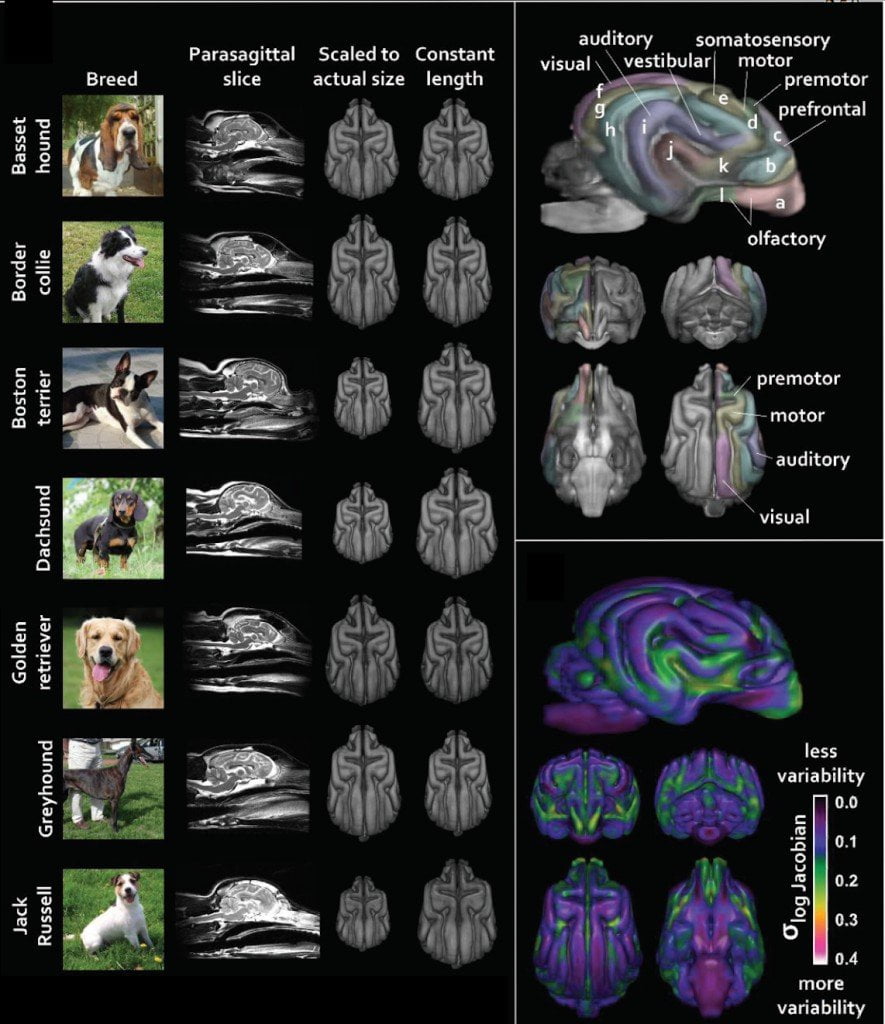Erin E. Hecht, Jeroen B. Smaers, William J. Dunn, Marc Kent, Todd M. Preuss, David A. Gutman, 2019
Highlights:
- Dogs' brain anatomy covaries with breed specialization like sight hunting, scent hunting, retrieving, herding, vermin control, fighting, guarding and companionship
- Most variation is found in more modern breeds, meaning that selective breeding has significantly altered the brains of dogs.
- Dog's brains do not scale proportionately with body size
ABSTRACT
Humans have bred different lineages of domestic dogs for different tasks, like hunting, herding, guarding, or companionship. These behavioral differences must be the result of underlying neural differences, but surprisingly, this topic has gone largely unexplored. The current study examined whether and how selective breeding by humans has altered the gross organization of the brain in dogs. We assessed regional volumetric variation in MRI studies of 62 male and female dogs of 33 breeds. Notably, neuroanatomical variation is plainly visible across breeds. This variation is distributed non randomly across the brain. A whole-brain, data-driven independent components analysis established that specific regional sub-networks covary significantly with each other. Variation in these networks is not simply the result of variation in total brain size, total body size, or skull shape. Furthermore, the anatomy of these networks correlates significantly with different behavioral specialization(s) such as sight hunting, scent hunting, guarding, and companionship. Importantly, a phylogenetic analysis revealed that most change has occurred in the terminal branches of the dog phylogenetic tree, indicating strong, recent selection in individual breeds. Together, these results establish that brain anatomy varies significantly in dogs, likely due to human-applied selection for behavior.
Download full study below



Responses